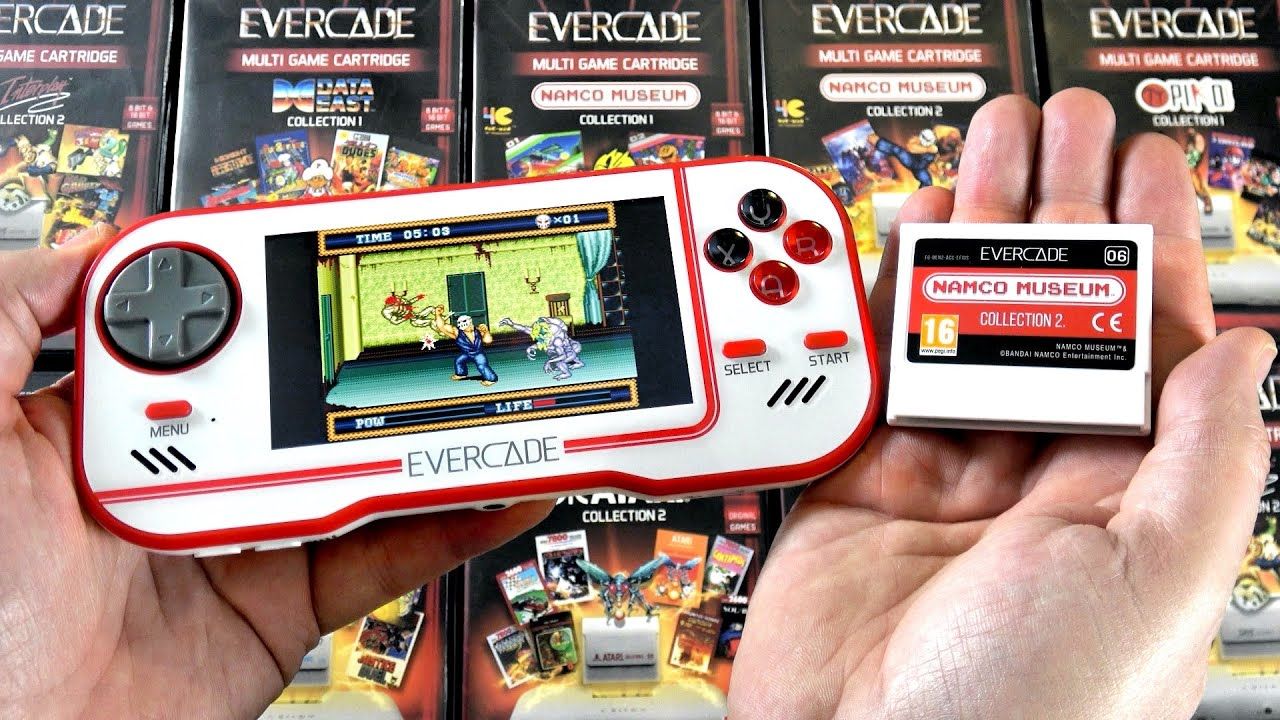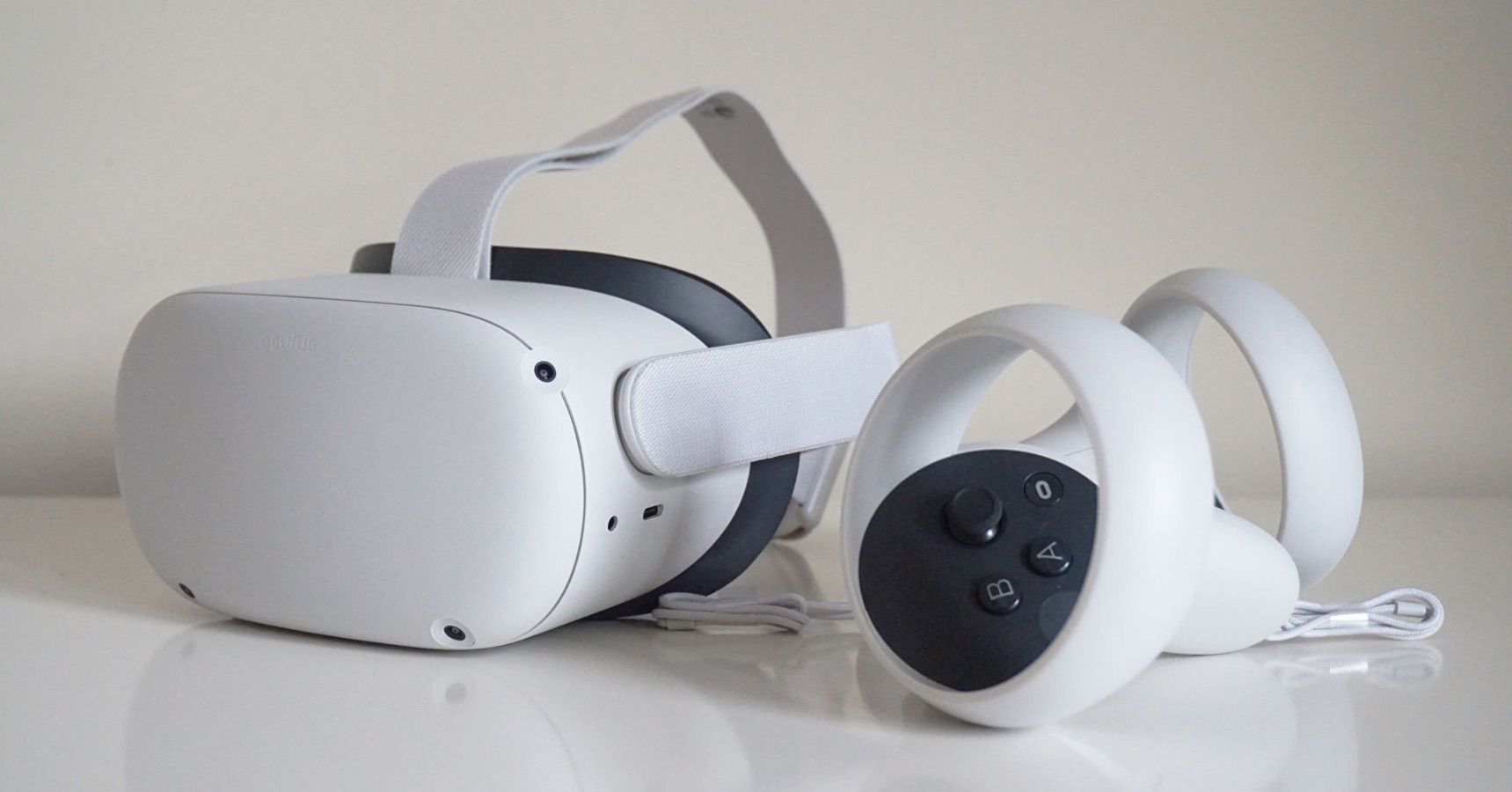The Evercade is a retro-lover’s dream come true. This handheld console is the most affordable and convenient way to reconnect with the history of gaming, spend time with classics, and discover new favorites. Unlike similar retro systems, the Evercade doesn’t gatekeep retro gaming like some kind of high-class hobby for elite connoisseurs. Rather, the Evercade is the best way to get some of the most enduring games of all time into your hands. It’s a fantastic device, a superb discoverability tool, and a leader in game preservation. There are certainly more authentic ways to experience what Evercade has to offer, but you’d be hard-pressed to find any that are quite as approachable.
The Evercade is, simply put, a cartridge-based handheld console. It has a form factor similar to a Game Boy Advance, with a D-pad on the left side, a 4.3” LCD screen in the center, two shoulder buttons on top, and four face buttons on the right. While photos of the console may give the impression that the device feels cheap, it actually has an incredibly solid build. The Evercade has a glass face and plastic body that give it just enough heft to make it feel nice in your hands without weighing you down. The shoulder buttons have a mouse click quality that I adore, and while the face buttons unfortunately don’t, they have a nice action that’s not too squishy. The round D-pad is great for fighting games and platforms because you can easily sweep directions. It’s not necessarily the most precise type of D-pad, but it’s a perfect fit for a retro console. Overhaul, the console feels great to hold and play.
The I/O is simple, but modern. It includes a micro-USB charging port, a 3.5mm headphone jack, an HDMI out for playing on a TV, and of course, the cartridge port. With no cartridge inserted, the exposed port is a lot more open than similar handhelds. I imagine this makes it a lot easier to clean if dust were to get into the connector, but I find it to be somewhat unsightly without a cartridge inserted. I’d like to see the superior USB-C on a future version of the Evercade, and perhaps an HDMI port that comes out of the back instead of the top, as the weight of the HDMI cable is slightly annoying.
Evercade cartridges are pretty unique. Each cartridge includes a collection of games from a single publisher, like Atari, Interplay, or Namco. There are also a number of modern retro game cartridges, including a Mega Cat collection and one of my favorite throwbacks, Xeno Crisis. Collections range from two to 20 games on a single cartridge. When you turn on the Evercade, you’ll be met with a SNES Classic-like menu where you can cycle through each title’s box art and choose which game you want to play. In most games, you can change the layout of the face buttons. The Evercade also has a built-in save state that you can use for every game, which is incredibly useful
Before you start playing, though, Evercade creates a remarkably familiar experience with the cartridges and cases. Every case is the same size, shape, and maroon color. They are numbered, which totally triggers my collector instincts, and makes them look great when all lined up on a shelf. Every case includes a full color game manual. Because of the size of the collections, the manuals are usually pretty slimmed down and only include a single-paragraph description and the controls for each game, but it’s still a great feature that adds a lot of nostalgic value to Evercade.
Playing games on the Evercade is great, but the handheld is not without its flaws. The first thing I noticed when I started playing was how incredibly narrow the viewing angle is. A twist to the left or right isn’t that bad, but tilting the console forward or back creates fairly dramatic effects. The ideal position is a backwards tilt at about 20 degrees. This is likely a comfortable wrist position for most, but I found that while playing from a lying position, I had a lot of trouble keeping the screen at the right angle. If you try to look at the screen straight on, the colors will completely invert.
Another peculiar detail about the Evercade is the screen dimension. It’s got a wide display, somewhere around 3 ¾” x 2”, but of course, all of the games are presented in a more square 4:3 aspect ratio. Even the modern games from the Mega Cat collection are presented in full screen. You can stretch every game to fill the screen in the options, but I’m not sure anyone would want (or should) do that. I tested close to 200 games and didn’t find a single one that fits the screen correctly. It’s not necessarily a flaw in the Evercade, but it seems like a 4:3 screen would have been more appropriate, since every game uses it.
One thing that the Evercade doesn’t compromise on is sound. Both the onboard speakers and the headphone output are spectacular, accurate, loud, and clear. I don’t have originals on hand to compare, but I believe that the music and SFX in the games I played have been accurately recreated on the Evercade. Sound is such an important part of memory, and I think the Evercade nailed the audio fidelity.
It’s my understanding that Evercade emulates games, and while I understand that there’s a difference between emulation and simulation, I’ve never experienced the difference myself. Other handhelds like the Analog Pocket treat emulation like a dirty word. If you are extraordinarily anal about things like this, the Evercade may be too pedestrian for you. I see the Evercade as a mass-market device that has the potential to get classic games into everyone’s hands.
The price point is unbeatable. The Evercade itself is $80 and the cartridges are only $20 each. Evercade is continually adding more games, and I can already feel the itch to continue growing my collection. It’s been a delight to casually pick up the Evercade and dive into Earthworm Jim, Dig Dug, or a Dizzy game for a short session. The Mega Cat, Interplay, and Namco collections have introduced me to vintage games I’ve never played before, which is something I find invaluable. I give full credit to the Evercade for that, and I can’t wait to discover more games on the system. It’s not a perfect handheld, but it’s the best way to play hundreds of classic games.
Next: Retro Beat’em Up Teenage Mutant Ninja Turtles: Shredder’s Revenge Brawls On Switch Later This Year
- TheGamer Originals
- Evercade
Eric Switzer is the Livestream News Editor for TheGamer as well as the lead for VR and Tech. He has written about comics and film for Bloody Disgusting and VFXwire. He is a graduate of University of Missouri – Columbia and Vancouver Film School. Eric loves board games, fan conventions, new technology, and his sweet sweet kitties Bruce and Babs. Favorite games include Destiny 2, Kingdom Hearts, Super Metroid, and Prey…but mostly Prey. His favorite Pokémon is Umbreon.
Source: Read Full Article

